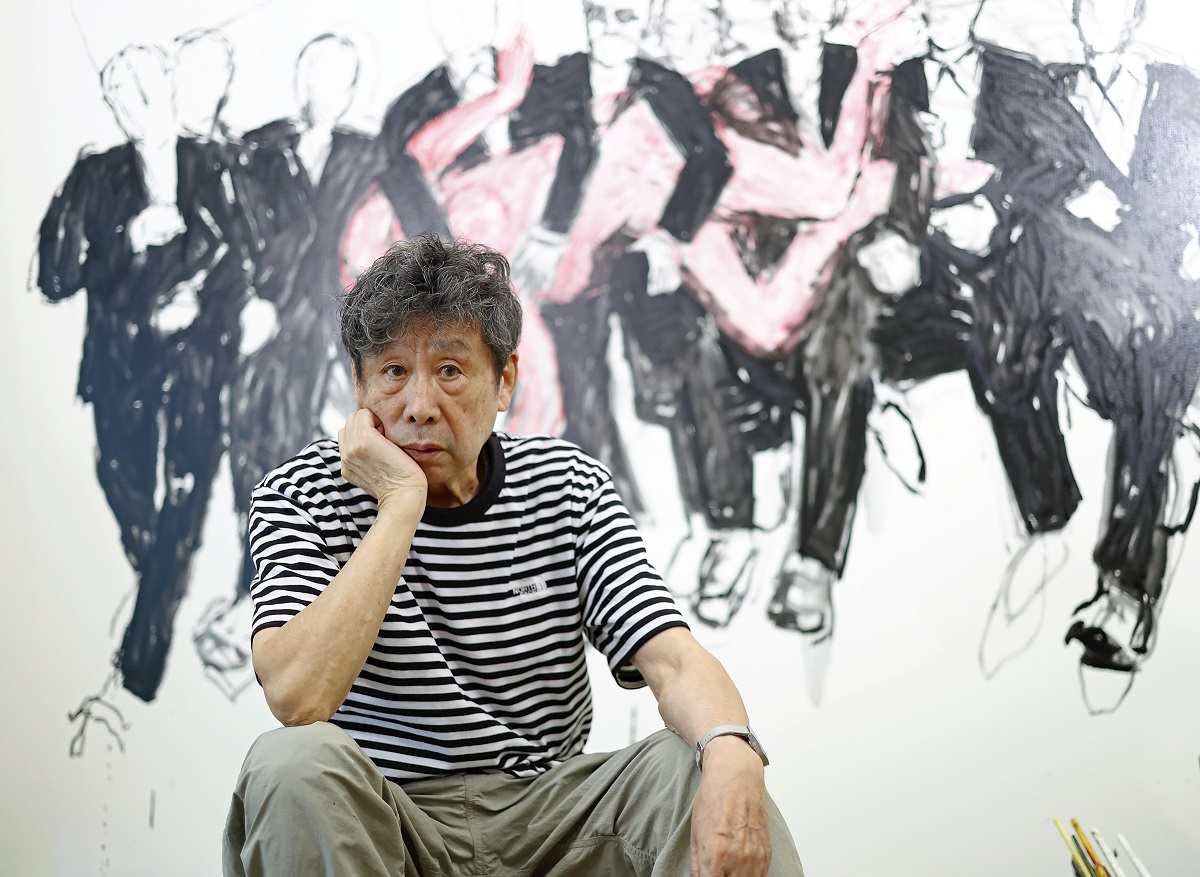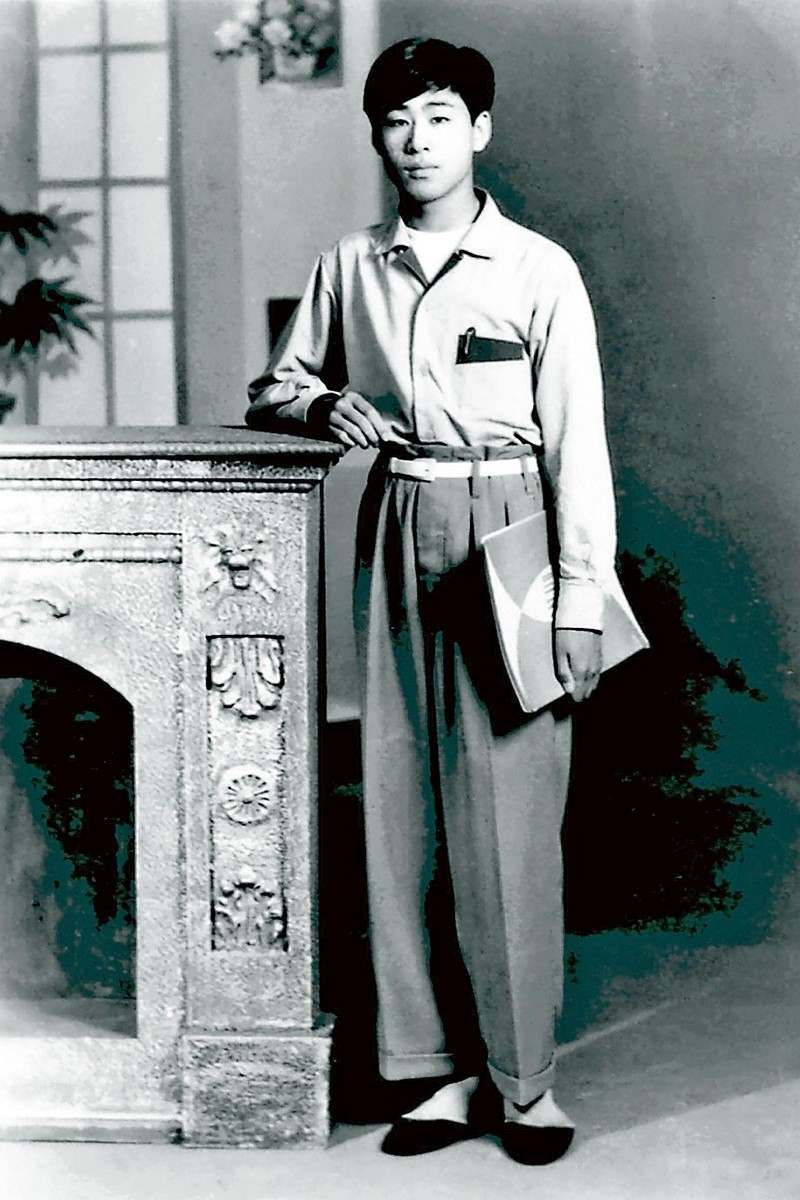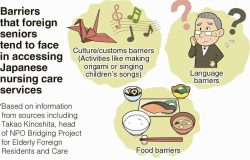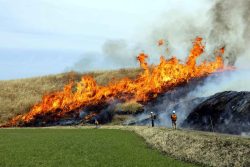
Tadanori Yokoo is seen in his central Tokyo studio. He says he spent more time in the studio during the coronavirus pandemic. “My creative work and life were intertwined; I think it was a necessary period of time for me.”
10:30 JST, December 11, 2023
Tadanori Yokoo first drew attention as a graphic designer in the 1950s, before later broadening his skill set to become a novelist, essayist and actor, among other roles.
Since turning his hand to painting in 1981, Yokoo, 87, has gained worldwide praise for his works that combine spiritual imagery with everyday affairs. He is now held in high regard by young and old from across the social spectrum.
Yokoo’s artworks often feature images related to death. “TADANORI YOKOO” — a poster-like block print representative of his early work — depicts the artist hanging himself.
His first book of paintings, meanwhile, is titled “Yokoo Tadanori Isaku-shu” (Tadanori Yokoo’s posthumous works).
Several factors contributed to his style. Yokoo’s adoptive parents certainly had a strong impact. Born in the town of Nishiwaki — now Nishiwaki City — in Hyogo Prefecture, he was adopted at age 3 by his father’s elder brother and his wife.
As his adoptive father and mother were “already quite old” when Yokoo became self-aware, he feared that they would soon die, and he would be left alone. He lived haunted by this worry.

Tadanori Yokoo, then a third-year high school student, poses at a photo studio in Nishiwaki, Hyogo Prefecture, in 1955.
His experiences during World War II affected him greatly, too. When he was a second-year elementary school student, a Grumman fighter plane approached the school grounds where children were standing for a morning gathering. While running away, Yokoo happened to clearly see the pilot in the enemy plane, which had flown toward him at a low altitude.
A series of paintings called “Aka no Jidai” (Age of the red) uses red and black as its basic colors. Yokoo said they are “unconscious iconography” that show the bright, red sky when the cities of Kobe and Akashi in the prefecture were raided by bombers.
In his other works, Yokoo often employs such motifs as nooses, skulls, the underworld and hell. “It’s likely that the experience of gradually impending death has become part of my body,” Yokoo said.
He points to novelist Yukio Mishima as among the most important people to influence his life and painting style. In 1965, Mishima visited Yokoo’s solo exhibition and Yokoo presented him with a work, leading to later exchanges.
At one time, Mishima told Yokoo in a strict tone, “Your works lack a sense of propriety and civility.” Recalling that time, Yokoo said, “I thought it was inevitable to be told that, because I drew naked women.”
However, Mishima also added, “That’s fine for artworks. But an artist should know these things.”
Yokoo says Mishima’s words are still clearly etched in his mind. It is important to Yokoo to never act arrogantly, and to treat everybody equally and kindly regardless of their name, achievements or social status. “The reason for that is Mr. Mishima lived his life that way,” Yokoo explained.
During the latter half of the 1960s in the United States, Yokoo encountered psychedelia and hippie culture for the first time, which made him increasingly spiritual. He practiced Zen meditation, traveled to India and gradually came to enjoy creating works that he felt had a spiritual element.
In 1981, he declared his intention to become a painter and entered the world of fine art. The move was partly spurred by a visit to the Museum of Modern Art in New York the previous year where he encountered a “shocking” exhibition of Pablo Picasso’s works.
“Inside myself, there was a sudden impulse telling me, ‘The age of the graphic has ended and it’s time to do fine art,’ and I could not resist the impulse. [It felt like] I was brainwashed by an invisible force.”
Looking back, Yokoo said he felt separated by revelation “from the graphic design that I had done for pleasure, that I was given the pain of creating [fine art works]. I believe this was my destiny.”
He added that works with a spiritual vibe represent “the polar opposite of conceptual art in which creators cleverly draw upon their intellect.”
When Yokoo paints, he tries to empty his mind of all thoughts and act in line with his physical responses, without sparing time for thinking. “Like an athlete,” he said.
“Humans are born immature, live while striving for perfection, and die unfinished. People thus repeat a cycle of reincarnation,” Yokoo opined.
Answers are difficult to find. Sometimes, people do not even know whether an answer exists. Nevertheless, Yokoo defines art as searching for answers.
Though he often finds things “hard and painful,” he has “never felt like stopping.”
These days, Yokoo continues to tackle huge canvases that tower over him. “The harder I push my body, the more absorbed I feel in the painting,” he said.
Yokoo conjures up world of Hanshan, Shide
“[Mr. Yokoo] is a painter who paints freely while allowing people to let their imaginations run wild while viewing his works,” said Masato Matsushima, director of the Tokyo National Museum’s curatorial planning department.
Matsushima, 57, was in charge of an exhibition titled “Tadanori Yokoo: 100 Takes on Hanshan and Shide,” recently held at the museum.
When Matsushima saw Yokoo’s work depicting traditional subjects such as Hanshan and Shide — Zen poet-monks of the Tang dynasty — at his studio in 2020, he was thrilled to encounter “something beyond parody.”
There and then, Matsushima proposed the idea of an exhibition featuring such works.
Yokoo subsequently produced 102 large new paintings in just 22 months. Rather than giving in to an inflamed tendon in his right hand, he reduced his brush pressure and painted with his left hand, too.
Of Yokoo’s work ethic, Matsushima said: “He accepts things as they are and paints without thought. It seemed to me that he himself was Hanshan and Shide.”
“The paintings don’t force any messages on you, but simply allow you the pleasure of looking at them,” he added. According to Matsushima, this is possible because Yokoo genuinely pursues what he wants to express.
Matsushima said Yokoo had dispelled the image he had held of artists as “selfish, and putting top priority on creating works.”
“Even though he gets angry, he always makes up for it later,” Matsushima said. “I think he comes to terms with people in the real world, so he can build a wide range of personal relationships both in Japan and abroad.”
***
The Legend feature profiles era-defining figures in culture, sports and other fields.
"JN Specialities" POPULAR ARTICLE
-

The Japan News / Weekly Edition (12/12-12/18)
-

English-language Kabuki, Kyogen Entertain Audiences in Tokyo; Portland State University Professor Emeritus, Graduates Perform
-

Noodle Dining Shunsai / Rich Oyster Ramen to Savor at Odasaga; Experienced 68-year-old Owner Creates Numerous Ramen Varieties
-

The Japan News / Weekly Edition (12/5-12/11)
-

People Keep Loved Ones’ Ashes Close in Special Jewelry, Small Urns as Unique Way to Memorialize Them
JN ACCESS RANKING
-

Keidanren Chairman Yoshinobu Tsutsui Visits Kashiwazaki-Kariwa Nuclear Power Plant; Inspects New Emergency Safety System
-

Imports of Rare Earths from China Facing Delays, May Be Caused by Deterioration of Japan-China Relations
-

Tokyo Economic Security Forum to Hold Inaugural Meeting Amid Tense Global Environment
-

University of Tokyo Professor Discusses Japanese Economic Security in Interview Ahead of Forum
-

Japan Pulls out of Vietnam Nuclear Project, Complicating Hanoi’s Power Plans

























